Recent datasets
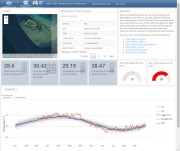
The dashboard set comprises individual web pages for each sensor/location. Each dashboard includes a map showing the location of the station, basic statistics and time series plots. If enough data is available (more than 10 years), a climatology of the temperature record is calculated. The SSTAARS climatology is also plotted along the sensor data. Hourly time series plots are also available at each instrument’s depth.
See "Interactive map of this dataset" resource link below for a navigation map to the dashboard web pages.
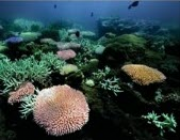
This dataset is the genome assembly of the staghorn coral Acropora millepora. Tissue samples were collected along the Central Great Barrier Reef during the 2017 mass bleaching event. Tissue was collected from a range of individual exhibiting both bleaching and non-bleaching phenotypes. A range of phenotypic analysis were conducted and linked to the genomic sequencing data provided here. The A.millepora genome (Scaffold N50 =1.23 Mb) draft assembly was constructed from a combination of PacBio and Illumina paired-end reads with 10X Genomics barcodes.
Methods:
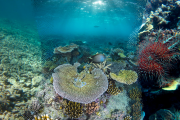
The dataset consist consists of two (A-B) csv files and one excel file (E). File A shows 1) the absolute percentage total cover and that of specific coral growth forms: Acropora tabular, Acropora branching, other branching species, and massive/submassive species surveyed at 5-9 m depth on 122 reefs (335 reef sites) by the AIMS Long-Term Monitoring Program (LTMP) and Marine Monitoring Program (MMP) between 1992 and 2017 and 2) the long-term average exposure of each reef to variable conditions in water quality (e.g.
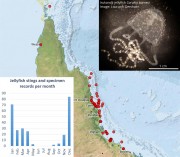
A later version of this dataset exists published 2019-01-18, accessible through the data links on this page.
This dataset contains records of sting events and specimen samples of jellyfish (Irukandji) along the north Queensland coast from December 1998 to March 2017. This dataset contains an extract (265 records in CSV format) of the publicly available data contained in the Venomous Jellyfish Database. The full database contains approximately 3000 sting events from around Australia and includes records from sources that have not yet been cleared for release.

This collection of temperature logger data has been produced to cover the most recent back to back bleaching events in the Great Barrier Reef to be used as a reference data set for coral bleaching studies. The data comes from over 90 permanent temperature logger locations within the reef from the AIMS temperature logger program, 12 AIMS automatic weather stations, 6 AIMS-IMOS mooring sites and 15 Queensland Environment wave-buoys temperature loggers. The data were restricted from late 2015 to mid-2017.

This data contains consists of one Excel spreadsheet file containing the thermal stress data used to develop the Species Sensitivity Distribution described in the publication: Negri, A.P., Smith, R.A., King, O., Frangos, J., Warne, M. St-J., Uthicke, S. (2019) Adjusting tropical marine water quality guideline values for elevated ocean temperatures Environmental Science and Technology 54: 1102-1110 DOI: 10.1021/acs.est.9b05961.

The dataset consists of multiple data files from four types of instruments to visualize current, temperature flow patterns and coral stress responses around the north west section of Moore Reef including a reef pass, taken during 2018-2021. These include 19 temperature and 12 current loggers and 69 CTD casts, along with fluorometry measurements of 33 tagged coral colonies. This dataset also includes photos of the tagged corals along with CoralWatch colour cards during a 5-week period from Nov-Dec 2020.
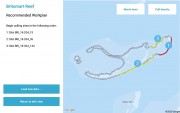
This dataset contains the code for the Android application “COTS Control Centre Decision Support Tool” (CCC-DST). The CCC-DST is one part of the “COTS Control Centre Decision Support System” (CCC-DSS) which is a hardware and software solution, comprising 32 Samsung Galaxy Tab Active2 tablets. The tablets run a kiosk operating system and provide three data collection apps, developed for GBRMPA by ThinkSpatial, and three decision support components developed by CSIRO as part of the NESP COTS IPM Research Program.
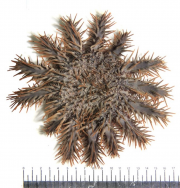
This dataset collected variation in the demography of Pacific crown-of-thorns starfish (Acanthaster cf. solaris) during the latest period of elevated starfish densities (active population irruptions) in the central section of Australia’s Great Barrier Reef.

This dataset consists of a small CSV file containing the locations, names and country of the Torres Strait villages associated with the Australian and Papua New Guinea Treaty Protected Zone and neighbouring PNG Treaty villages This dataset is intended for the creation of regional maps.
The village locations are not official and were based using satellite imagery to place the village marker on either the centre of the visible village, or the post office location, if that was marked in Google Maps.
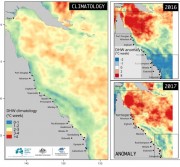
This dataset explores a new approach to predict coral bleaching events. It uses a temperature anomaly map to create a spatially dynamic temperature threshold for the calculation of degree heating weeks (DHW) instead of using a static constant. The dynamic threshold was used to classifies map areas with low, medium or high risk of coral bleaching for years 2016 and 2017.
Methods:

This dataset contains Vegetation and Biomass monitoring data collected for the NESP TWQ Project 5.9, formally NESP TWQ 2.1.4 - Demonstration and evaluation of gully remediation on downstream water quality and agricultural production in GBR rangelands and Landholders Driving Change (LDC) contracts LRP17-003 and LME17-009. Data is from control and treatment gully sites on commercial grazing properties in the Burdekin.
BOTANAL files describe the biomass, species composition and species attributes such as basal area and cover for hillslope areas above gully erosion sites.

This dataset contains RTK GPS Data collected between April, 2017 and March, 2018 for 5 paired Control/Treatment gully sites being monitored as part of NESP Project 2.1.4 (Demonstration and evaluation of gully remediation on downstream water quality and agricultural production in GBR rangelands). The key question being asked is “is there measurable improvement in the erosion and water quality leaving remediated gully sites compared to sites left untreated?” The monitoring approach uses a modified BACI (Before after control impact) design.
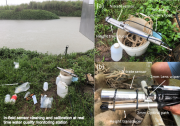
This dataset contains the results of the real-time water quality monitoring program (RTWQM) conducted across the Russell-Mulgrave catchment (south of Cairns) for "Project 25". Project 25 spanned two (2) NESP TWQ projects: 2.1.7 (2016 - 2018) and 4.8 (2019 - 2020), with the dataset for Project 4.8 also containing the data for Project 2.1.7. Data is the result of 2-3 hourly in situ logging of stream height (in metres) and nitrate concentrations (mg/L).
* This dataset is under an embargo period for 18 months from the completion of the project extension (NESP TWQ 4.8).
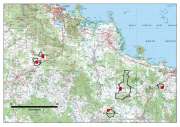
An updated version of this dataset is available at https://eatlas.org.au/data/uuid/38b496a3-3fba-42e7-b904-902f68040c85
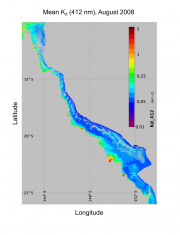
This dataset contains estimates of diffuse attenuation coefficient (Kd) of downwelling irradiance at different wavelengths (412, 443, 469, 488, 531, 547, 555, 645, 667 and 678 nm) in the Great Barrier Reef Marine Park and Coral Sea for each day from July 2002 through to December 2019. Data are provided on a nominal 1km grid for each wavelength.
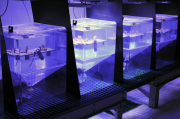
The dataset consists of four data files from a 20-day experiment to investigate different photophysiological responses of two species of coral (Acropora millepora and Pachyseris speciosa) to constant and variable daily light integrals.
Methods:
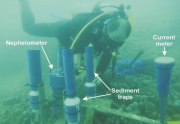
This dataset documents the spatial and temporal variability of resuspension events and sediment dynamics at seven Great Barrier Reef Lagoon inshore locations using continuous logger data (10 min sampling intervals) over 3 ½ years and analysed the quantity of sediment collected in newly designed sediment traps. The dataset highlights the influence of river discharge events on sediment dynamics across these locations.
*This dataset is currently under embargo.
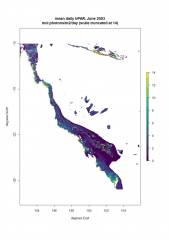
This dataset contains estimated daily integrated benthic photosynthetically active radiation (bPAR) in the Great Barrier Reef Marine Park and Coral Sea for each day from July 2002 through to December 2019. Data are provided on a 1km grid.

This dataset contains Vegetation and Biomass monitoring data collected for the NESP Project 2.1.4 (Demonstration and evaluation of gully remediation on downstream water quality and agricultural production in GBR rangelands). The aim of the vegetation monitoring in relation to this project is to track change in biomass and species composition over time on hillslope areas above gully erosion within control and treatment sites (treatments vary), linking to changes in downstream water quality.



